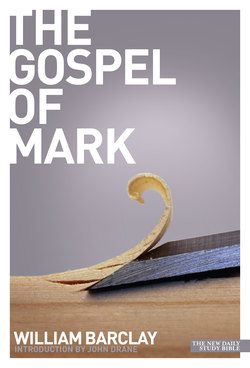Читать книгу New Daily Study Bible: The Gospel of Mark - William Barclay - Страница 11
На сайте Литреса книга снята с продажи.
ОглавлениеINTRODUCTION
(by John Drane)
Our understanding of the Gospel of Mark has undergone several significant developments since William Barclay wrote about it. At one time, its position as the first gospel to be written was assumed to give it a historical primacy over Matthew and Luke, whose gospels were more obviously crafted in accordance with the interests of their authors. In 5:40–3, Barclay confidently connects Mark with eyewitness accounts from Peter himself, but today even those who hold that opinion would acknowledge that the finished text is just as much a redactional product as the other synoptics, shaped by the concerns of Mark and his readers in the middle of the first century.
The overall picture of Jesus would also be slightly different today. During Jesus’ childhood and teenage years, the Hellenistic city of Sepphoris was under construction not far from his home town of Nazareth, which suggests that people in the construction industry (like the household of Joseph) would be quite prosperous – and also that Galilee was not a cultural backwater, but central to Hellenistic Palestine, with Greek regularly spoken on its streets. Barclay’s understanding of the Pharisees as legalists, while still defensible, has also been challenged in recent discussions, while the role of the synagogue has undergone some redefinition.
At the same time, Barclay’s exposition of Mark still speaks to today’s concerns. He emphasizes the importance of community for Jesus (on 3:13–19, ‘It is significant that Christianity began with a group . . . a very mixed group’), and his comments on the miracle stories are infused with an insistence that, with Jesus, even life’s crises can be transcended. During his lifetime, he was regularly criticized for what some took to be rationalizing ‘explanations’ of the miracles, though his approach was actually more subtle. The comment on the stilling of the storm (6:45–52) is typical, where he inquires if there might be a ‘scientific’ explanation, concludes that we don’t know – and then asks whether it matters anyway. In some ways, he was ahead of his time by refusing to assume that science could answer such questions.
People today are unlikely to imagine that science ever could say anything worthwhile on matters of faith. For those familiar with the mystical claims of the New Age on the one hand, and charismatic Christianity on the other (neither of which was significant during Barclay’s lifetime), his approach of offering background information and then inviting readers to decide such things for themselves is likely to have considerable appeal.
John Drane
University of Aberdeen
2001
